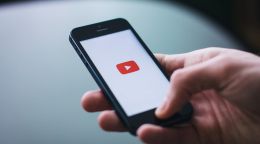Unlocking science communication for a better-informed society

What is science communication? Why is it important to communicate to a general audience?
‘Pollinators Prefer a Dash of Salt in Their Nectar’ – this was the title of a science communication article published in Discover Magazine last year. The article was about a research study on how flowers with a higher sodium content attracted more pollinators; more in terms of numbers and variety. Readers who followed the writer were particularly piqued to realise that sprinkling a little saltwater solution on their flowers could potentially entice more bees and butterflies to their garden. 1
Science communication brings complex jargon-filled science in an interesting, accessible form to the doorsteps of common man. But then, why should one really bother?
From medicine to agriculture, from transportation to architecture, from communication technologies to power generation, and more, we are surrounded by products of scientific advances. From our very existence to the natural world surrounding us, it is all a scientific miracle. Moreover, we live in an age where there is unprecedented reliance on science and technology to provide us with solutions for better lives and a sustainable future.
Given that we are knee deep in a multitude of challenges (involving STEM aspects) like climate change, water scarcity, food insecurity, biodiversity loss, and health crises, it is crucial that people comprehend the scientific perspective necessary to make informed decisions about them.
Science communication is the obvious answer. But the role of science communication encompasses significantly more. The goals of communicating science include the following 2:
- Conveying scientific findings and simply sharing the thrill of newfound knowledge
- Empowering individuals with a scientific understanding of the world they inhabit, enabling them to navigate life more adeptly
- Educating people about the science relevant to particular issue
- Directing people’s thoughts, actions and policy choices, especially when they have a direct impact on the society at large
- Interacting with the community and seeking to understand their concerns; concerns that have the potential to be addressed through scientific research
Apart from these goals, effective science communication plays a major role in fighting misinformation. With the advent of digital and social media, misinformation has become more widespread, blurring the lines between fact and fiction. Topics such as vaccine safety, the shape of the earth, evolution and climate change have contributed heavily to misinformation since a number of years. However, the scene got progressively worse during the 2019 pandemic. At a time when relaying accurate scientific information to the public to control the spread of the virus was of acute importance, misinformation triumphed over science communication. Posts from the World Health Organization (WHO) and the US Center of Disease Control (CDC) together achieved only several hundred thousand engagements in comparison to hoax and conspiracy theory sites, which have gained over 52 million! 3
How can one reach out to the general population effectively?
Considering the significance of science communication, communicators are tasked with the responsibility of not just conveying accurate scientific information, but also making it engaging and relevant. People must be interested enough to care and make a difference. We must do more than relaying facts and figures. Science communication must strive to invoke a greater, more emotional, connect between the public and science.3
Science communication must therefore employ more routes of dialogue than just the written word. Avenues such as social media posts, podcasts, public debates, plays, comics, movies, videos, animations and illustrations, songs and dance, science centers and science museums must be tapped to increase awareness and scientific literacy. The role of communication should involve both researchers working in the field and communication experts from diverse artistic disciplines.
Tips for effective science communication
Science communicators must understand their audience, their culture and background, and build their communication material accordingly. In the traditional journalistic field, science stories with touches of personal anecdotes provided by researchers or by individuals impacted by the research are more likely to be published, considering the competition with other more ‘sensational’ or popular news pieces.4 Discussing challenges, roadblocks, and hurdles in a research along with its findings gives science stories a storyline that is more relatable.5 Such storylines work towards building trust, so that people would, over time, choose scientifically proven facts over hoaxes.
Numbers and data should be simplified and presented as easy-to comprehend charts or infographics. Concepts must be broken down without the use of jargons to enable better understanding. Analogies, based on the reader’s background, can be used to explain technical concepts, to make the story more relatable. Good writing or presentation skills help to develop a storyline that flows easily and conveys the message clearly. One must ensure that the important and most relevant points are clearly highlighted in the story and not diluted with the rest of the content.
Science communication today has crossed the borders of plain dissemination, where scientists preach the public about their work. It now calls for dialogues between scientists and the public, with members of the public actively participating and exchanging views, values, experiences, and concerns reciprocally with the research community.6
Examples of conventional science communication
The University of Queensland has published a story about how an herbal tea taken by pregnant women in Africa led to the fortuitous discovery of a class of circular plant-based peptides. This class of peptides can potentially revolutionize the drug market with edible plant medicines that you can grow in your garden.7 Imagine that! Although the piece is a clear science communication one, it reads as a story, with a gripping narrative, taking the reader through the course of discovery of the plant-based peptide, describing events leading to it and events following it.
Of course, not all science communications are narrative tales. Here is an example of a science communication gone wrong. During the COVID-19 pandemic, the Centers for Disease Control and Prevention, USA (CDC), issued a series of guidelines to [SN1] direct people on mask usage, post-vaccination. They declared that those who are vaccinated can discontinue using masks and disregard distancing norms, indicating the potency of the vaccine. This communication was, however, quoted as confusing, even by health experts. They were perceived as unclear messages during the pandemic and generally unsafe for people. 89
In this 10story published in Nature, in 2017, writer Esther Landhuis adeptly translates complex glycobiology into an engaging narrative, deftly weaving together real-life anecdotes of scientists working in the field and experimental glycobiology. The humanised account of the newly emerging field provides an overview of the subject, showcasing the significance of glycans as a biological molecule, the technical challenges associated with studying them, how technical advancements in the field have begun to bridge the gap in studying these molecules, and future implications. The read is highly engrossing, communicating to non-specialists the essence of glycobiology with a captivating narrative flow.
Conclusion
Science communication is not just about disseminating scientific information. It is an instrument for building a more informed and empowered populace. The challenges for the science communication industry are many, but with patience and persistence we surely can break the barriers of mistrust and scientific illiteracy. Practicing effective methods of science communication along with ensuring public participation in dialogues and debates can go a long way in this regard.
References
1. Ball, J. From Math Models to Bee Species: How Effective Science Communication Benefits All. Ecology & Evolution Community http://ecoevocommunity.nature.com/posts/from-math-models-to-bee-species-how-effective-science-communication-benefits-all (2023).
2. Committee on the Science of Science Communication: A Research Agenda, Division of Behavioral and Social Sciences and Education, & National Academies of Sciences, Engineering, and Medicine. Communicating Science Effectively: A Research Agenda. 23674 (National Academies Press, 2017). doi:10.17226/23674.
3. Joubert, M., Davis, L. & Metcalfe, J. Storytelling: the soul of science communication. J. Sci. Commun. 18, E (2019).
4. Bubela, T. et al. Science communication reconsidered. Nat. Biotechnol. 27, 514–518 (2009).
5. Cooke, S. J. et al. Considerations for effective science communication. FACETS 2, 233–248 (2017).
6. Reincke, C. M., Bredenoord, A. L. & van Mil, M. H. From deficit to dialogue in science communication. EMBO Rep. 21, e51278 (2020).
7. Dempsey-Jones, H. Out of Africa. https://stories.uq.edu.au/research/impact/2020/out-of-africa/index.html.
8. Brangham, W. How the latest CDC guidance on COVID-19 is creating unnecessary confusion. PBS NewsHour https://www.pbs.org/newshour/show/how-the-latest-cdc-guidance-on-covid-19-is-creating-unnecessary-confusioncovid-confusion (2022).
9. Stanley-Becker, I., Guarino, B., Sellers, F. S., Cha, A. E. & Sun, L. H. CDC’s mask guidance spurs confusion and criticism, as well as celebration. Washington Post (2021).
10. Landhuis, E. Glycobiology: Sweet success. Nature 547, 127–129 (2017).
[SN1]Original CDC page with the announcement seems to be broken:
https://www.cdc.gov/coronavirus/2019-ncov/vaccines/fully-vaccinated.html
The hyperlink provided links is to a Washington Post news article that wrote about the CDC announcement
Comments
You're looking to give wings to your academic career and publication journey. We like that!
Why don't we give you complete access! Create a free account and get unlimited access to all resources & a vibrant researcher community.











